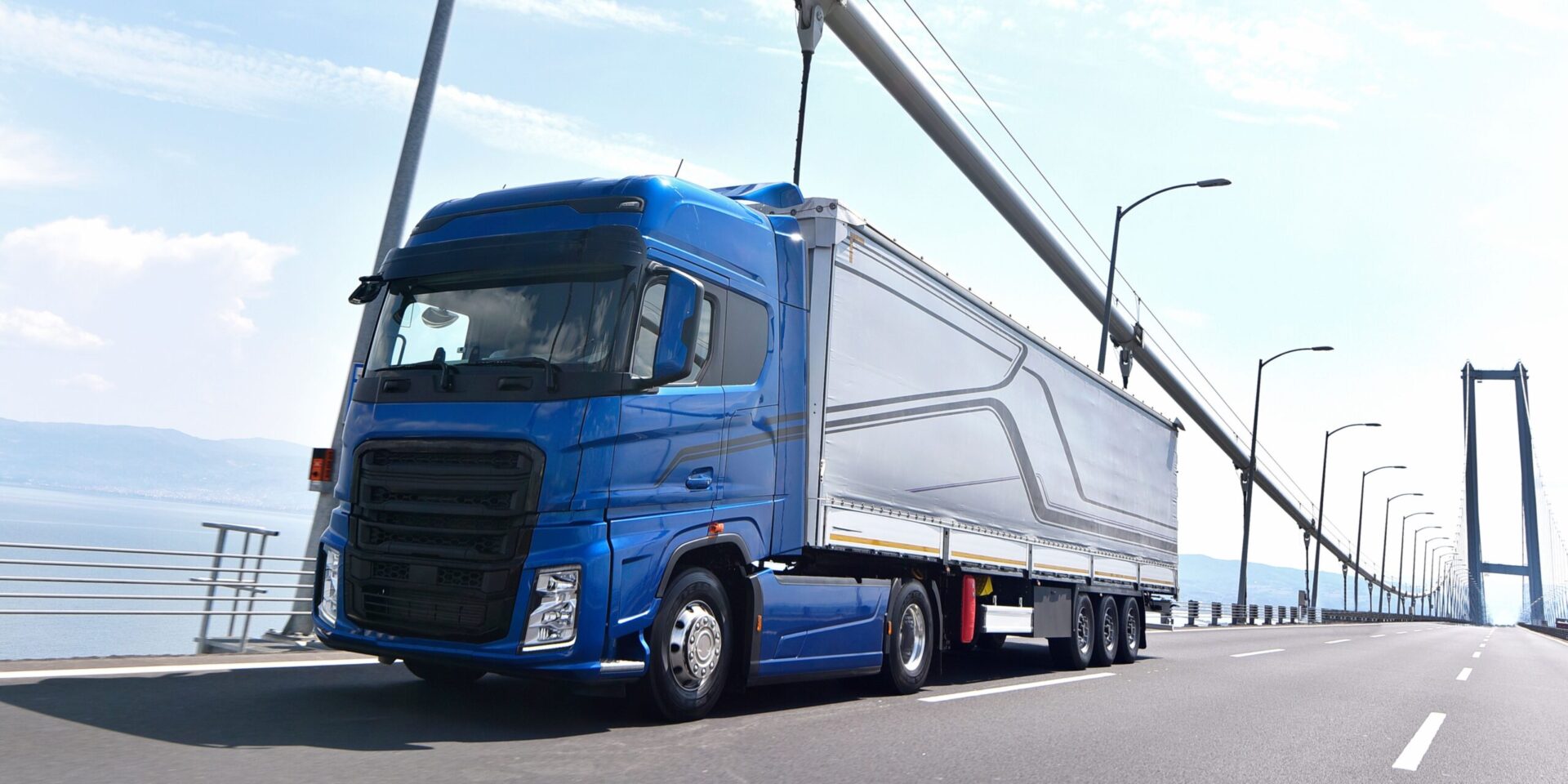Language:
How to Start a Transportation Business in 11 Steps

The transportation industry is an important part of modern society, and starting a transportation business can be a lucrative and rewarding endeavor. With proper preparation, you can successfully start your transportation business and navigate the industry’s competitive landscape.
But starting a transportation business can be overwhelming. Starting a ride-share service, trucking company, or courier service can also come with some challenges. This guide will walk you through the steps for how to start a transportation business — from researching the market to obtaining any necessary permits and licenses.
Let’s get started building your transportation business!
Types of Transportation Businesses
Before we dig deep into how to start a transportation business, let’s go over the main types of services in the industry. The many types of transportation companies have their own requirements and challenges.
Common types of transportation companies include trucking and freight services, courier and delivery services, cab and ride-sharing services, air transportation services, and shipping companies. Each transportation company requires certain licenses, permits, specialized equipment and vehicles, and trained employees.
Trucking services
Trucking services involve transporting goods over long distances. This type of transportation business moves goods across countries or regions and is less expensive and more efficient than air travel or ocean freight for shorter distances.
Trucking companies are in high demand for transportation services and have the potential for significant profits. But the industry is competitive, and operating costs can be expensive because of high fuel prices, vehicle maintenance, and insurance policies. Trucking companies also face many legal challenges and must adhere to strict safety standards.
Taxi Company
A cab company provides transportation services to passengers, usually in urban areas. This type of transportation company is convenient and flexible for customers who need a quick ride to a specific location.
Taxi companies have low start-up costs and potentially high demand, especially during peak travel times. But the industry is highly competitive, and cab companies must deal with the constant change in market conditions and regulations. Cab drivers must also contend with safety concerns, traffic congestion, and rude customers.
Shipping companies
Shipping companies transport goods over long distances, usually by sea or air. This type of transportation business is vital to global trade and allows companies to reach customers around the world.
Shipping companies are in demand and have the potential for high profits. But the industry is also competitive, and shipping companies must deal with financial risks, strict regulations, and fluctuating fuel prices. In addition, the logistics of transporting goods can be complex and require a great deal of planning and coordination.
Air transportation services
Air transportation services involve the transportation of passengers or goods by air quickly and efficiently, making it ideal for long distances. Air transportation companies ensure top-quality security, and quick service and have the ability to reach customers worldwide.
Although this industry can be lucrative, it requires enormous investment to start a business. Government restrictions also limit the type of cargo that can legally be shipped, and safety concerns and weather-related disruptions can also pose significant challenges for air transportation.
Starting a Transportation Business in 11 Steps
Ready to launch your enterprise? Here’s the breakdown of how to start a transportation business, step by step.
1. Develop Your Business Plan
Developing a comprehensive business plan is crucial for any transportation company. The plan should provide an overview of the business and its goals, such as the types of transportation services, the target market, and the profit margin.
It should also include a financial plan to cover start-up costs, such as purchasing vehicles, applying for permits and licenses, insurance, and employees. It’s essential to have a marketing strategy for advertising, networking, and building relationships to ensure you have a stable of loyal clients. Include a plan for day-to-day operations for scheduling, dispatching, vehicle maintenance, and driver training.
A well-developed business plan not only helps secure funding but also provides a road map for the transportation company’s success.
2. Choose a Business Name
Choosing a company name is an essential aspect of building a transportation business. The name should be memorable, easy to spell, and relevant to the business. A good company name should also convey the image of professionalism, quality, and reliability that sets the transportation company apart from the competition.
When choosing a name, make sure it’s not already being used by another company and that it’s available as a domain name for the company’s website. You can determine whether a business name is taken by doing a Google search, checking the availability on a hosting website, or the website of a state business filing agency.
3. Determine Pricing
Pricing is critical for any transportation company, and prices must be set to cover the cost of operating the business while being competitive in the marketplace. When setting prices, the cost of purchasing the fleet and equipment, labor, and overhead must be considered.
A taxi service may charge per mile or per minute, while a transportation company may charge by weight or distance. An air carrier may set prices based on the destination, class of service, and season. Market conditions such as demand and competition can also influence pricing.
It’s important to strike a balance between cost recovery and competitive pricing to attract and retain customers. A well-designed pricing strategy can help ensure a transportation company’s profitability and long-term success.
4. Decide on Your Business Structure
The corporate structure will determine the legal and tax obligations of the company as well as the liability of the owners. Deciding on the corporate structure should depend on the size and complexity of the business, the number of owners, and the desired protection of personal assets.
In the next section, we’ll examine some of the most common business structures, and their advantages and disadvantages to help entrepreneurs decide on the best structure for their transportation business.
Sole Proprietorship
A sole proprietorship is a type of business in which an individual owns and operates a business. It’s the simplest form of business ownership, making it an ideal choice for many small transportation businesses. The benefits of a sole proprietorship include complete control over the business, and all profits go directly to the owner.
A sole proprietorship also means the owner is personally liable for the debts and legal problems of the business. In the event of business losses or litigation, this can jeopardize personal assets. Sole proprietors also may find it difficult to raise capital or obtain business loans because lenders consider them high risk.
Nonetheless, a sole proprietorship can be a good option for transportation companies just starting and looking for a simple and cost-effective ownership structure.
General Partnership
A general partnership is a business in which two or more people share ownership and operation of a business. In the transportation industry, a general partnership can be a good choice for a trucking company or courier service.
A general partnership offers the benefits of shared financial responsibility and joint management, which reduces the need for extensive paperwork and external reporting. However, similar to a sole proprietorship, the partners are personally responsible for the company’s debts and legal problems.
It’s important to enter into a partnership agreement that specifies the responsibilities of each partner, profit sharing, and conflict resolution procedures to avoid disagreements between the partners that could harm the business.
Limited Partnership
A limited partnership is a type of business entity where there are one or more general partners who manage the business and are only liable for their capital contributions.
The limited partners may contribute capital to the business but have no management responsibility and limited liability.
This is a way to combine the benefits of partnership and limited liability in a single business structure. In the transportation industry, a limited partnership can be a good choice for a business that needs additional capital but where the owners don’t want to assume the risks associated with personal liability.
The advantages of a limited partnership include better access to capital, reduced personal liability for limited partners, and the possibility of tax benefits.
But limited partners have no control over the management of the business and may face unexpected tax liabilities. General partners must also be careful to comply with legal guidelines and be aware of their personal liability.
Limited Liability Company
A Limited Liability Company (LLC) is a type of business that protects its owners from personal liability. In an LLC, the owners, called members, aren’t personally liable for the debts and legal affairs of the company.
LLCs are popular in the transportation industry because they allow business owners to separate their personal and business finances while providing liability protection. The benefits of an LLC include a simplified tax structure, flexibility in management and ownership, and limited liability protection.
But forming and maintaining an LLC can be more costly than other business forms, and there may be more paperwork and regulations to comply with. In some states, LLCs must also pay an annual franchise tax.
C Corporation
A C corporation or C-corp is a business entity that is legally and fiscally separate from its owners. In a C-corp, the corporation is liable for its debts and legal affairs — not the owners. The advantages of a C-corp include raising capital through selling stock, protecting shareholders from liability, and offering employee benefits such as stock options and pension plans.
But establishing and maintaining a C-orp can be more complicated and costly than other forms of business, and its profits are subject to double taxation. The company must pay corporate taxes on its profits, and shareholders must pay taxes on dividends received. C-corps also are subject to more regulations and legal requirements than other types of businesses.
S Corporation
An S corporation or S-corp is a form of business that provides many of the benefits of a C-corp but is taxed similarly to a partnership. In an S-corp, the corporation itself isn’t taxed on its profits, but the profits and losses are passed through to the individual shareholders, who report them on their personal tax returns.
Benefits of an S-corp include protecting shareholders from liability, a simplified tax structure, and the ability to offer employees benefits such as retirement plans.
But establishing and maintaining an S-corp can be subject to more legal scrutiny than other forms of business. S-corps are also limited to 100 shareholders and can only issue one class of stock, limiting their ability to raise capital.
5. Register Your Business and Get an EIN
Registering your transportation business and obtaining an Employer Identification Number (EIN) is an important and necessary step in starting your business. The EIN is a nine-digit number assigned by the Internal Revenue Service (IRS) to identify your business for tax purposes.
Registering your business protects your personal assets and legitimatizes your business in the eyes of the IRS. This process can vary by state and the form of business you choose but typically includes registering your business name in your state.
An EIN is also essential for opening a business bank account, paying taxes, and hiring employees. With a registered business and an EIN, you can conduct business legally and enjoy the benefits of being a legal carrier.
6. Obtain Licenses and Permits
The specific licenses and permits required for your business depend on the type of business and its location but generally include a business license, vehicle registration, driver’s license, and insurance.
For example, a taxi business requires a cab license, a special license plate, and commercial auto insurance. A trucking company may need an oversized or hazardous transportation permit, and a courier service may need a delivery service permit.
It’s important to learn about the licenses and permits required in your area and make sure you meet all requirements before you start your business. Not obtaining the required licenses and permits can lead to fines or legal problems that can damage the business’s reputation and customer loyalty.
7. Get Insurance
When it comes to transportation, there are many opportunities for accidents to occur so it should be a priority to apply for the appropriate insurance for your business. The type of insurance you will need depends on the size and scope of the business.
For example, a small courier service may only need commercial auto insurance to cover vehicle accidents or damage. But a larger trucking company may need more extensive coverage, such as cargo insurance, to protect against loss or damage to goods, liability insurance to cover accidents or injuries, and worker’s compensation insurance to cover employee injuries or illnesses. It’s important to work with an experienced insurance broker to evaluate the specific risks of the transportation company and ensure the right policies are in place.
8. Plan Your Finances
Starting a transportation business can be a big investment. Costs include purchasing or leasing vehicles, insurance, fuel, permits, licenses, and personnel. A financial plan must be prepared to cover startup costs and ongoing expenses such as accounting, taxes, and payroll. Proper financial planning can help a transportation company maintain profitability, ensure financial stability, and secure funding for growth and expansion.
Open a Business Bank Account and Credit Card
Opening a separate business account and credit card establishes separate business transactions — making it easier to track income and expenses.
A business credit card can also be used to pay for expenses such as fuel, repairs, and supplies while earning rewards or cash back. In addition, having a dedicated business account and credit card can help boost a business’s credit score, making it easier to obtain loans or financing in the future. Make sure to look for a bank or credit card company that offers the best terms, rewards, and benefits for a transportation business.
Secure Financing
The most common transportation company funding sources include commercial loans, government grants, and venture capital. Commercial loans can be obtained from banks, credit unions, or online lenders and can be used to finance vehicle purchases, equipment, or operating costs.
If you go green, government grants may be available for certain types of transportation agencies, such as those that provide services to underserved communities or are environmentally friendly.
Venture capital is a funding option that can provide a significant amount of money for transportation startups that show promise for growth and profitability, but it may require the company to give up some control or equity.
Each financing option has advantages and disadvantages, and it’s important to carefully consider the terms and requirements before committing to any financing.
9. Fleet Inventory
For a transportation company to be successful, having the right fleet of vehicles is critical to meet customer demands and stay competitive in the marketplace. This includes having the right types of vehicles, such as trucks, vans, or cars, and ensuring they’re equipped with the necessary safety features and equipment.
It’s important to maintain the vehicles and equipment to minimize downtime and ensure they’re always in good working order. With the right fleet, a transportation company can provide quality service that is reliable, efficient, and prompt, which will help build a loyal customer base.
10. Hire Your Team
Employees are the face of the company and can have a direct impact on customer satisfaction and retention, so you should hire drivers, mechanics, dispatchers, and administrative staff who have the necessary skills and experience and are committed to providing quality services.
It’s also important to provide regular training to employees to ensure they’re familiar with the latest regulations and technology — and stay knowledgeable about the company’s products and services.
Good training can also help prevent accidents, increase efficiency, and improve customer satisfaction. Aim to create a positive work environment where hard work and dedication are valued and rewarded. This can help retain the best talent and build a strong team.
Once you have your team, paperwork, and business plan lined up, promoting your transportation business will create leverage and push your business ahead of the competition.
11. Promote Your Transportation Business
Promoting your transportation business is key to locking in clients and generating growth. Some strategies to promote a transportation company include:
- Creating an SEO-optimized website
- Increasing online visibility with multiple social media profiles
- Attending trade shows and other networking events to connect with potential customers and partners
- Using load boards to find new opportunities for transportation services
It’s important to have a comprehensive marketing strategy that includes a mix of traditional and digital marketing efforts to reach a wide range of potential customers.
This will give you an edge over your competition and cut through the noise in this competitive industry.
Get Your Transportation Business Off the Ground and on the Road
Starting a transportation business can be a challenging but rewarding endeavor. From writing your business plan to marketing your services, there are many important steps you must take.
With doola’s support, you can focus on growing your business and providing excellent transportation services to your customers. Take a look at doola’s bookkeeping services to assist you in staying organized and up-to-date with your finances.
FAQs
Which transportation business is most profitable?
Every type of transportation business can be just as profitable as another. How profitable comes down to how successful the business is and how big you plan for it to be.
Does a transportation business require a license?
Yes, a transportation business typically requires a license and other permits and certifications depending on the type of business and location.
Is it hard to start a transport business?
It can be a challenge to start a lucrative transport business if you don’t have a large amount of capital to invest in it, but there are many ways you can still monetize and have a successful business.
How much cash do you need to start a trucking company?
Typically, it costs anywhere between $10,000 and $200,000 to kick-start a trucking business. It depends on the size of the operation you wish to run.
How can I start a transport company with no money?
To start a transportation business with no money down, you should take out a loan or use rental vehicles to get started and build from there.
Keep reading
Start your dream business and keep it 100% compliant
Turn your dream idea into your dream business.















